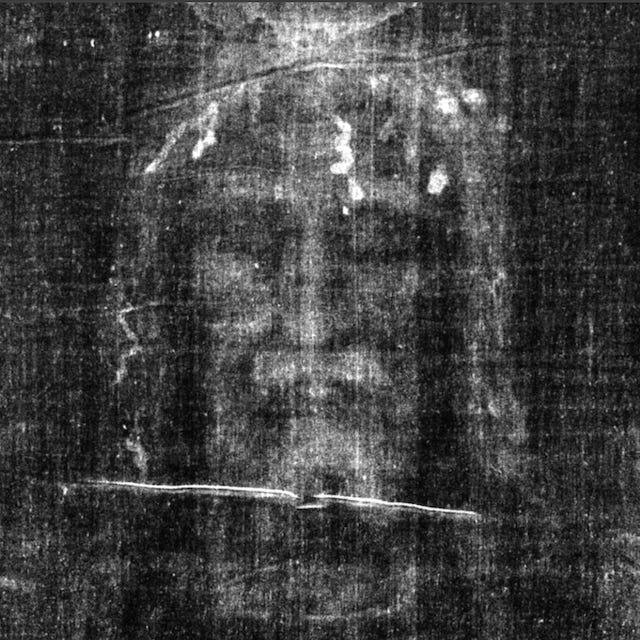A Shroud of Light and Life
This piece will be part of a series of reflections during the season of Lent 2024.
It was about 4:00 a.m., and it was just my father, me, and his two dogs in the house. A boisterous family of five had once filled it with music, food, laughter, arguments, and life. All of that was gone. My siblings had moved away, and I had returned unexpectedly. My mother lay dying in the hospital. Her battle with breast cancer was almost over. She would only live another ten days.
The pain of her death was so heavy. Darkness could have overtaken my heart. Death could have won. It didn’t. People had been gathering to pray with us. They brought us food. They carried us when we could barely get along. Friends would call in to check on us. And YouTube helped, too. It provided prayers, songs, and a good amount of distraction or solace. I could pull up a hymn, a prayer, or meditation music to quiet my mind. I was looking for a prayer that night, but another video appeared.
It was the documentary He is the Image of the Invisible God. My searches probably skewed the algorithm, but it didn’t diminish the great comfort I found in learning about the Shroud of Turn, the ancient piece of cloth believed to be Jesus's burial shroud. I knew about it as a child but had never given it much thought. I probably saw it at church or in some document in one of my catechism classes. Its home is Turin, Italy (hence the name), but I didn’t know much else. I hit play.
The information was astounding and brought to mind St. Paul's first letter to the Corinthians, Chapter 15: 17.
“…if Christ has not been raised, your faith is in vain.”
This is the key to the Christian faith – all of it, every teaching, every piece of writing, every part of its past, present, and future depends on this one fact: If Jesus did not come back to life, then Christianity is of no importance.
Though I had been raised as a Catholic, my faith became lukewarm in the post-college years and much of my adult life. I criticized the Church and its leaders for their flaws and their atrocities throughout history. My criticism included the leadership at my parish and diocese. It was part of a list of reasons for living my faith superficially while exploring other ideas and religions. I never looked at myself and how I had to change. I didn’t look at Jesus closely or all the good the Church has done throughout history.
If Christianity is true, then what Jesus said about life, death, and resurrection must be true first. He left evidence of this truth in the Church, sacred tradition, scripture, and, of course, on his burial cloth. I learned as much that night and that it has been venerated for centuries, though most of the studies and research on it have only been done in the past 130 years.
Photos of the Shroud reveal that the original image functions as a photographic negative. Secondo Pia, an Italian photographer, was the first to see this quality in 1898.
Interest in the Shroud increased after a computerized image analyzer called a VP-8 showed that the Shroud (a flat sheet of cloth) contained 3D information. That development prompted a team of scientists to come together and form the Shroud of Turin Research Project or STURP in 1978. The team traveled to Italy that October with tons of equipment and studied the Shroud 24 hours a day for five days straight—hoping to learn how the image was made. Three years later, they published their findings in scientific journals. Barrie Schwortz, the team’s photographer, became a champion of the cloth. He offers some of their findings and thoughts in the documentary. Here’s a short list:
The image functions like a photo negative, but it is not a photograph. It is not a painting. It contains no paint or pigments. It is not a scorch. It is not a print. It is not a rub. It is not an etching. It contains human blood and plasma. The image does not penetrate the entire cloth. The image is only on the very surface of the fibers that bear it. It is unlike any other image in history. The team could not explain how the image appeared on the cloth.
Shwortz also shares, “My life is better by 1,000 percent than before because the Shroud is in my life.” It also restored his faith in God.
The Shroud helped restore my faith, too, though I never lost it entirely. I remembered that Jesus walked the earth, healed the sick, gave sight to the blind, preached good news to the poor, and set the captives free. He was betrayed, crucified, and died. Death could have won.
Today is Ash Wednesday, a day to remember our fragile nature and tendency toward wrongdoing and mistakes. It’s also when we start our walk toward Good Friday, a day to remember that Jesus took the ashes of death, hate, sin, intolerance, jealousy, fear, and all human brokenness with him to the cross. He takes our ashes even now and makes them into new life. Death didn’t win. Jesus’ resurrection on Easter is proof of that, and the cloth is a silent witness to that event.
May the Shroud bring light to your life. Have a blessed Lent.
More information on the Shroud:





